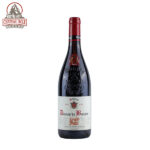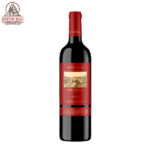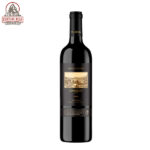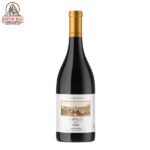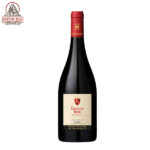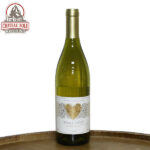Mourvedre
Mourvèdre (also known as Mataró or Monastrell) is a red wine grape variety that is grown in many regions around the world including the Rhône and Provence regions of France, the Valencia and Jumilla denominaciones de origen of Spain, as well as the Balearic Islands, California and Washington State and the Australian regions of South Australia and New South Wales, as well as South Africa. In addition to making red varietal wines, Mourvèdre is a prominent component in “GSM” (Grenache, Syrah, and Mourvèdre) blends. The variety is also used to make rosé and port-style fortified wines.
Mourvèdre tends to produce tannic wines that can be high in alcohol. The style of wine produced from the grapes varies greatly according to where it is produced, but according to wine expert Jancis Robinson Mourvèdre wines often have wild game, or earthy notes to them, with soft red fruit flavors.[3] According to wine expert Oz Clarke, young Mourvèdre can come across as faulted due to the reductive, sulfur notes and “farmyard-y” flavors that some wines can exhibit before those flavors mellow with age.
The variety can be a difficult grape to grow, preferring “its face in the hot sun and its feet in the water” meaning that it needs very warm weather, a low leaf-to-fruit ratio but adequate water or irrigation to produce intensely flavored fruit that is not overly jammy or herbaceous. The vines’ susceptibility to many viticultural hazards such as powdery and downy mildew as well as overly vigorous foliage can present additional problems for vine growers.
The small, thick-skin berries of Mourvèdre are high in phenolic compounds that have the potential to produce a deeply colored, very tannic wine with significant alcohol levels if harvested at high sugar levels. However, the variety is rarely harvested at sugar levels below 13% alcohol (approx 23 Brix) because the flavors at those lower levels are often very weak and herbaceous. In winemaking, wines made from Mourvèdre are prone to both oxidation and reductive flavors (such as hydrogen sulfide) if care is not taken at the winery. While in Bandol, it is common to ferment Mourvèdre with the stems, the grapes usually go through a crusher/destemmer in New World regions such as a California due to the harsher, green tannins that are more typical of the stems in those regions. While the wine can be stored in oak barrels, it often does not absorb oak flavors as well as other varieties (such as Merlot and Cabernet Sauvignon) so it is often stored in neutral oak or large format barrels.
In many regions of the world, Mourvèdre is often blended with other varieties such as Grenache and Syrah in the “GSM” blends of Rhône, Australia and the United States. In these blends, Mourvèdre often provides color, fruit and some tannic structure to complement the fruity Grenache and elegant Syrah. In Provence and Rhône it also sometimes blended with Cinsault and Carignan as part of both red table wines and rosé. In Australia, the variety is sometimes used in fortified port-style wines.
According to wine expert Jancis Robinson, in favorable vintages Mourvèdre can produce highly perfumed wines with intense fruit flavors and notes of blackberries and gamy or meaty flavors. Oz Clarke notes that some examples of Mourvèdre may come across as faulted in their youth with “farmyard-y” and strong herbal flavors. As the wine ages, more earthy tertiary aromas may develop before becoming more leather and gingerbread aroma notes.
In both Old and New World wine regions, Mourvèdre is a popular grape to be used in rosé winemaking. These wines can be made as a dedicated rosé where the skins are allowed only a brief period of skin contact (a few hours or a single day) before they are pressed or as saignée where some of the juice destined for a red Mourvèdre is “bled off” during fermentation creating two separate wines—a darker, more concentrated red wine and the lighter rosé.
Showing all 2 results

